Mike Vardy's Blog, page 102
March 4, 2014
Review: The Productivity Blueprint
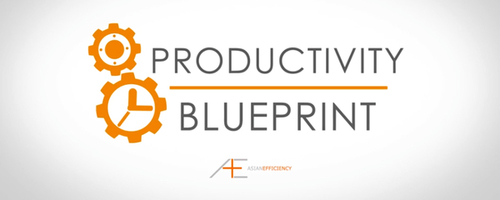
If you've been looking for a program that will not only elevate your productivity now but for years to come, then you're going to want to give The Productivity Blueprint some serious consideration.
Developed by Asian Efficiency, the team that brought you OmniFocus Premium Posts, The Productivity Blueprint delivers the goods on several fronts. They describe the course as "layered" and I couldn't agree more. Much like how I've said that every time you read David Allen's Getting Things Done you'll get something different - perhaps something deeper - out of it, the same can be said for The Productivity Blueprint. And that's a very good thing.
The Productivity Blueprint is broken down into four modules, and each module has a specific element (dealing with email, distractions, etc.) that is explored in great detail. Because the course is so layered, you also don't need to complete one particular module before another so you can spend time on any given area that you feel you need to improve first. That said, it's ideal to do each module itself in order because elements of earlier sessions within the module are necessary to grasp before moving on to later sessions (or at least moving on to them with more clarity).
There are over 60(!) videos in included in the main portions of the course, and those videos don't include the "action screencasts" that can be found throughout the modules. These screencasts offer recaps of the actionable steps presented in the videos, and also offer tutorials on how to complete certain actions related to apps and services.
The delivery of the videos is solid and the production value is high. Both Thanh and Aaron strive to make it seem as if they are right there with you along the way, which is evident in their style of delivery. In fact, Thanh and Aaron offer up "conversational" videos at the tail end of each module as a bonus. During these conversations, the two of them talk about the topic in a manner that really fits the tone of the entire program. The whole tone - the whole feel, really - of The Productivity Blueprint is that is very accessible. The approach they've taken with the material is wise because it tends to draw in both the productivity enthusiast and those that haven't explored enhancing their own efficiency and effectiveness all that much.
The Productivity Blueprint is $997, or you can pay for it in two installments of $597, which might put it out of most people's price range (although you'd be paying at least that much – or more – for short-term coaching elsewhere). But the Asian Efficiency team is so confident about this product that you can try the entire course risk-free, and if you don't like it, they'll give you 100% of your money back - no questions asked.
The Premium Edition of The Productivity Blueprint includes additional content like "interrogations" with several well-respected individuals on how they keep their productivity at high levels1, exercises, exclusive audio, and more. (Note: The Premium Edition can only be purchased when you pay for The Productivity Blueprint using the lump sum option, and is priced at an additional $497.)
The Productivity Blueprint is one of the most accessible and valuable productivity products available anywhere. I've not found a more comprehensive program that is such a solid combination of layered, tactical, and practical strategies for the price - and that includes products produced by the likes of Stephen Covey, David Allen, and Tony Robbins. The Asian Efficiency team have delivered a program that has an extensive shelf life and can help anyone - no matter their skill level or knowledge of productivity practices - bring their efficiency and effectiveness to incredible heights. The price tag won't be for everyone, but the content certainly is.
You can get The Productivity Blueprint by clicking here.2
1 Including yours truly.
2 Even though I disclose this across the board on the Start Here page, I felt that it was also a good idea to mention here that I am an affiliate for this program and will receive some remuneration for every product sold via the links above.






 Related StoriesA Look at the Samsung Galaxy Note 3 and Galaxy GEARReview: RHA MA450i Headphones
Related StoriesA Look at the Samsung Galaxy Note 3 and Galaxy GEARReview: RHA MA450i Headphones
February 28, 2014
Wrapping Up And Ramping Up
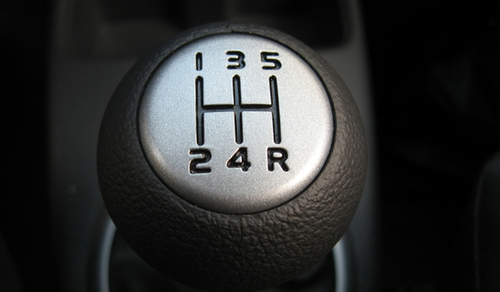
The start of the year can be both rejuvenating and overwhelming. There's a couple of reasons for this.
First, many people tackle new challenges and resolutions that require a great deal of willpower and discipline. Secondly, many people are working hard to close out the calendar year that recently came to an end and are also in the process of kicking the new calendar year into action. That's a lot to do, which results in a lot of not doing well instead.
Wrapping up and ramping up shouldn't intersect nearly as much as they do in the early months of the year. In fact, they shouldn't intersect like that at any time of year. Ideally, you'll want to have much of the wrapping up done before you ramp up anything else.
Why?
Because wrapping up and ramping up require a great deal of equal attention, and when you split your focus between the two then neither of them will be done as well as they could be. For example, the month about to end is usually the month where I start to build up for the months ahead. But I got sick early last month with a nasty virus that took nearly five weeks to shake completely, so that threw my wrapping up of the months gone by way out of whack. So I spent the last month wrapping up certain things, eliminating others, and I still have some correspondence to take care of and commitments to move forward with that have yet to be moved at all. I've moved small things ahead, but none of the big things.
But that's okay because I've been focused more on the wrapping up than the ramping up because I know the results of at least one of those actions will suffer otherwise.
Wrapping up and ramping up are necessary to move forward effectively. The key is to make sure you focus on them one at a time in order to maximize your overall effectiveness.
Photo credit: bury-osiol via SXC.HU






 Related StoriesBeing Okay With Your InboxesGive Your Mind Fallow TimeThe Art and Science of Managing Expectations
Related StoriesBeing Okay With Your InboxesGive Your Mind Fallow TimeThe Art and Science of Managing Expectations
February 21, 2014
The One Email Trick That Keeps My Inbox In Shape
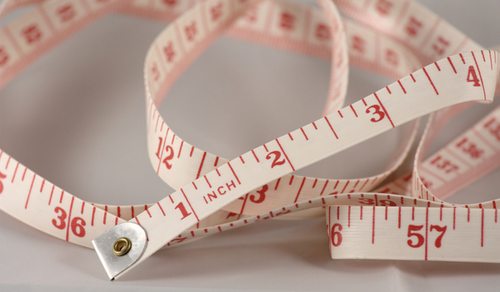
Email is a real pain point when it comes to truly being productive. I've discussed a slew of thoughts on email strategies at length here at the blog and dedicated a section of The Productivityist Workbook to email management, but if you're looking for one trick you can use to get your inbox in better shape now, then you're in luck. This trick is going to pay off huge dividends if you make the switch and stick with it.
The one email trick I've used to keep my inbox in shape is to sort my incoming mail so that the oldest email is the ones I see first. I go by the "first in, first out" rule, and it works.
I've heard from many people who I have encouraged to do this that they've pared down the emails in their inbox drastically. One individual just this past week said they were able to eliminate 300 emails in 20 minutes simply by switching to the same view I use.
There's no reason you can't do this. Gmail has this feature(Note: Gmail's web interface no longer allows for date sorting. I'd suggest you use a native application like the ones mentioned below to regain the ability to do this.). Outlook has this feature. Native email applications like Postbox, Mail.app, and Airmail have the ability to sort emails from oldest to newest. Simply by "flipping the switch" you can discover any stale emails and deal with them now instead of later — and no email should be dealt with too late if you maintain this sorting method.
Flip the switch on your email sorting method for a week (or, better still, 39 days). I'll bet your inbox — and you — will be in better shape by doing so.
Photo credit: ColinBroug via SXC.HU
February 20, 2014
A Productive Life: Collect, Organize, Review And Eliminate
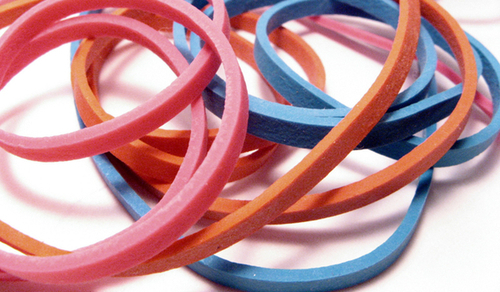
The following is the third and final post in a series on leading a productive life by Bojan Dordevic. Bojan is an Internet marketing professional with a passion for all things productive, and is the co-founder of Alpha Efficiency Magazine (I make an appearance in the second of issue of said publication). You can invite him for a Hangout on Google+ and follow him on Twitter or App.net.
In my previous posts, I've discussed integrating goals and integrating habits into your life. This time around, I want to talk about the CORE.
CORE stands for Collect, Organize, Review, and Eliminate. In order to completely assimilate the CORE habits, we need to recognize our already existing oness, do an audit, and learn how we can improve. If you think about the ways you already Collect, Organize, Review, and Eliminate, you will understand how you work, operate, and where your productivity bottlenecks lie.
Once you recognize the patterns and habits that are preventing your CORE from working properly, you can take decisive steps to correct them and turn your productivity approach into a well oiled machine. That machine will truly drive you towards your goals. Sure, there are some issues you might encounter along the way, but here's how they feel for every part of the CORE.
Collecting
We are always collecting. That is the nature of our minds — to assimilate information and give it a certain form and place. But instead of forcefully changing your habit patterns of collection, I advise you to take small steps towards evolving your current collection system, see what is wrong with it, and let it grow and expand into the rest of your system. The way you start is the way you finish, so pay attention and always be certain that the way you are collecting is the way you are building up the rest of the CORE. Keep in mind that collecting is the critical component of the CORE because everything else follows it.
Integrating the habit of collecting in your life is the most tedious part of your productivity journey, and I believe it should have priority over all the other habits in your efforts to become more productive. Not all things are worthy of collecting, but there are always tidbits of information that are. There is a big benefit of having everything that comes to mind all in one place. So just focus on collection, no matter whether the ideas seem good or not. Once your pile of rubble (both the good and not-so-good kind) is big enough, it’s time to move on to the next part of the CORE.
Organizing
Organizing becomes a chore when you let the things you need to organize sit for too long, so you need to make sure those things get to where you want them to go on a regular basis. Sticking with this habit was very hard for me, and every once in a while I’ve noticed that I let it slide. Usually you'll recognize that you are not on top of this habit when your task management inbox is consistently overcrowded.
Clearing your inbox and simply organizing the tasks into groups can give you the overview of the direction in which you want to take your life. But this habit won’t actually get you to the finish line by itself. Organizing your time and tasks into one place will give you the peace of mind and clarity that will allow you to make educated decisions with the demands on your time. For numerous people this is worth it, as not everybody really understands how much of their own time they actually have.
Reviewing
Reviewing is essentially the opposite of organizing. It's critical, and unfortunately it is the habit that has the lowest retention rate in terms of implementation.
When you review, audit yourself...and do so ruthlessly. When we review, we can be honest with ourselves and understand why we did (or did not) succeed in our plans. Reviewing requires a dose of honesty with yourself. That's because it can give you insights into your own lies — the lies that are preventing you from succeeding with your plans. Don’t be afraid of being honest with yourself. It’s far better than living in the imaginary world, where nothing gets done.
Eliminating
Eliminating is the biggest priority, as it leads directly to executing and accomplishing goals. But when you don’t have the road map that the other aspects offer and focus exclusively on eliminating, then you lose far too much valuable time on doing the wrong things. Or worse, you completely waste time by focusing on irrelevant tasks. Smart elimination means dealing with things you’ve previously managed and decided to prioritize with purpose.
Final Thoughts
Don’t be afraid of embracing your destiny by embracing the habits that are integrating into your life plans and goals. Taking care of your own destiny has never been easy, as it will always put you in a mode where you are consistently fighting for your dreams. The difference between those that make it and those that don’t,is hidden in those little steps we make on daily basis that get us one step closer to our destination.
Remember...your goal isn’t to do things. Your goal is to become your dreams.
Photo credit: valike via SXC.HU






 Related StoriesHow To Use Evernote To Store And Organize Your IdeasHow We Pulled Off a Huge Event Through OutsourcingThe Strikethrough System: A Simple Paper-Based Productivity Tool
Related StoriesHow To Use Evernote To Store And Organize Your IdeasHow We Pulled Off a Huge Event Through OutsourcingThe Strikethrough System: A Simple Paper-Based Productivity Tool
February 17, 2014
Being Okay With Your Inboxes
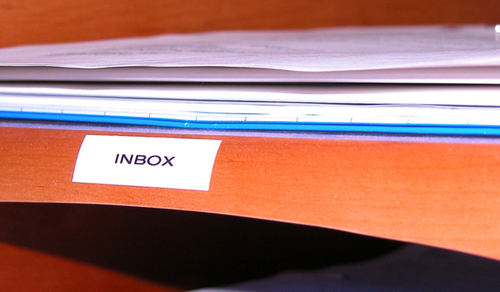
Episode 59 of Beyond The To-Do List (hosted by my buddy Erik Fisher, author of the recently redesigned book Ready, Aim, Fire: A Practical Guide To Setting And Achieving Goals ebook) features a return appearance of Merlin Mann. Merlin talks about a wide variety of things, but the part that hooked me from the onset was the topic of "inboxes" that he spends some time discussing. I don't want to spoil it for you as it is an excellent listen, so instead I'll tell you that you'd better be honest with your inboxes so that you can really be okay with your inboxes.
I'll freely admit that I have a lot of inboxes. For example, I have seven email inboxes. Mind you, I have one email app – Airmail – that is essentially the larger inbox that houses the seven email inboxes. (Actually, I have more email apps if you count the ones I use on my mobile devices, but that's really not the crux of the issue.) The thing is that I make conscious choices to check each of those seven inboxes at times that keep me moving the right things forward. I don't check my personal email inbox during the day. I don't check the informational email account associated with Productivityist in the evening. I'm being deliberate with when (and how) I check these email inboxes and I'm also okay with leaving bright red dots on inboxes that aren't in need of checking at certain times.
I'm not afraid of inboxes at all. I have tons of them. My main notebook in Evernote is called "Inbox" for a reason. I know exactly where to put things in Evernote when I'm quickly capturing things that belong in the app, and I know what do with the stuff in that notebook when I'm ready to process those notes. The term "inbox" acts as a trigger for both action and inaction, depending on where my mind is at as the day progresses.
I have an inbox on my bookshelf, which is where all of my paperwork goes until it is ready for processing. It's visible so it can't be ignored for long periods of time, but I only work through it when I'm in processing mode. That also allows me to use paper as the gateway to my digital task management app. Once I place my capture notebook on the top of whatever pile exists in that paper inbox (if there's even a pile at all), a trigger has been set in motion. I know there's stuff that needs to be processed in there because I've placed a notebook that is chock full of stuff that I'm going to want to review for processing later. I can't end my day without processing that inbox as a result.
But that doesn't mean I need to process it at that moment.
Being intentional with what the role of each inbox plays puts you in a far better position to be honest with how you use them. And that, in turn, allows you to be okay with your inboxes.
So...are you okay with your inboxes? Let me know if you are and why in the comments below.
Photo credit: icaliber via SXC.HU






 Related StoriesGive Your Mind Fallow TimeThe Art and Science of Managing ExpectationsRecognizing Opportunity in the Pursuit of Your Calling
Related StoriesGive Your Mind Fallow TimeThe Art and Science of Managing ExpectationsRecognizing Opportunity in the Pursuit of Your Calling
February 14, 2014
My iPhone Screens, Explained
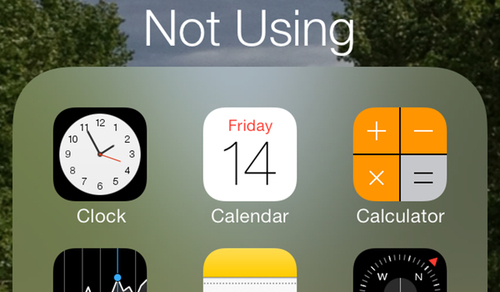
I recently posted a photo of my iPhone 4S home screen on Facebook and Twitter, and people started asking about why certain apps had a home there. Rather than try to explain it over social media, I decided I'd write a post about it. I also decided to up the ante a bit and offer up all of my iPhone screens in the process. By displaying everything I've got installed, you'll get an idea of what apps I'll be focusing on iOS-wise over the next few months. (Fear not, Android users. I'll be offering up a similar post in the next few weeks once I've finalized my choices on the Samsung Galaxy Note3.)
This is a pretty lengthy post, so let's get to the goods.
The Dock
OmniFocus: I've talked about my love for OmniFocus on many occasions, and despite the fact that many people think it is complicated, it embodies a lot of the qualities I like in a task management solution: It can be as simple as you want it to be or as powerful as you need it to be (Whether you want to dive deep or simply make it work for you, I'd suggest checking out Asian Efficiency's posts about OmniFocus along with their OmniFocus Premium Posts product). OmniFocus is still my go-to personal task management app of choice, and for that reason alone it gets a place in the dock.
Drafts: The gateway app for any idea or task I capture digitally. I've written about Drafts here, here, and here, so you should give those posts a read and you'll understand why I love it so much.
Dispatch: My email app of choice, even though it's iOS only. I don't want to spend too much time in email, and Dispatch gives me the ability to get those emails that need deferring to the right app (Evernote for ideas and OmniFocus or Asana for tasks). Its actionable qualities land it in my dock. Rest assured, I'll be writing more about my usage (and love) for Dispatch more often in upcoming posts.
Fantastical: Even though I manage to use my calendar more sparingly than some, when I do need access to it I call on Fantastical. The natural language component is a big deal for me, and it's had it far longer than the native iOS calendar app. I've been using Fantastical for a long time, and I've stuck with it as it has evolved into Fantastical 2.0. And I'm keeping it stuck in my dock where it belongs.
The Home Screen
Launch Center Pro: The gateway to a ton of my installed apps. I've written about LCP here, here, and here, so you should give those posts a read (when you're done with the posts on Drafts) and you'll understand why I love it so much. And now it's even available for the iPad as a native app.
Sleep Cycle: My alarm clock, plain and simple. I like the fact that it keeps track of my sleep in a way that isn't all that intrusive (re: I don't have to wear anything) and it does the job well enough. I've been using Sleep Cycle for many months now and it was the app that pushed the Clock app to the third screen.
Calm: My new meditation app of choice. Calm is a fairly new player to the game, but it's great for people who are wither new to meditation or have had trouble with the ritual. (Note: This app has replaced Zazen Suite, which was on my home screen when I posted it a couple of weeks ago.)
Full: My new habit tracking app of choice. While Lift was the app that lived on my home screen a couple of weeks back, Full has taken its place. Why? It's simple, it is scalable, and it keeps me connected to my habits without having others in the mix. Tat appeals to me far more than the crowdsourcing aspect that Lift employs. I realize that a lot of people will have an easier time maintains good habits with others keeping them accountable, and Lift definitely has that going for it. But I really like the look and feel of Full, and I'll be shining more of a spotlight on it in the next week or so.
focus@will: I find listening to music while I work to be helpful, and a recent article over at my old stomping grounds, The Next Web, indicates I'm not alone. The iOS app version of the web-based service focus@will gives me several musical options, even on the free plan. While I do get frustrated by having to log in consistently, it remains on the home screen, mainly because many other web-based apps force me to log in just as often.
Audible: I re-upped with Audible this year after taking a couple of years off, and I'm glad I did. I'm plowing through more books as a result, which was a goal of mine this year. Since I don't do a ton of reading o my iPhone, Audible covers some of my bases in that department. (Note: Blinkist is also helping out in that department, and its iOS app may make its way to the home screen soon enough.)
Velocity: Michael Schechter introduced me to this app, and I'm very glad he did. It's the only app I use to actually read lengthy material on my iPhone. I process much of my Instapaper queue in Velocity, having upped my reading speed to 300 words per minute. Much like with Full, I'll have more to say about Velocity in the next couple of weeks.
YNAB: My budgeting and finance app of choice. YNAB (short for You Need A Budget) is the only budgeting app I've stuck with for any amount of time, and it's the only one m wife and I agree that works for both of us. Even with the YNAB iOS app on my home screen there are momentary lapses of use, but the reason it stays on my home screen is that I it wasn't there it'd be out of sight and, therefore, out of mind. And you don't want your budgeting program out of mind.
Jotana: While Asana continues to develop a revision to its mobile app, I'm using Jotana as a gateway to my Asana projects. I use Asana for my team-based actions (although Todoist can handle teams up to 6 – including the main user — on its freemium plan) and I've got no plans to leave it behind as they keep adding great features. Once they get the mobile app up to snuff, I'm sure it will replace this third-party app.
Todoist: I've been experimenting with Todoist lately, and that's why it's on the home screen. Todoist impresses me on several fronts, as it has a clean interface and is available on a wide variety of platforms. The Todoist iOS app is no exception in terms of interface and functionality, and if there's one task management app that has me tempted more than any other to make a shift, it's this one.
Untappd: The only check-in service I use, Untappd allows me to share what beer I'm drinking and where. I've obtained far more badges with this app than I ever did with Foursquare.
Neat: My scanning app of choice. In fact, I use the Neat app even more than my NeatDesk. I'm also using the NeatCloud service to make sure everything goes where it needs to go. Again, like YNAB, there are days where I neglect to scan receipts that need scanning. But if Neat wasn't on my home screen I'd be doing a lot more scanning at home...and in larger batches to boot.
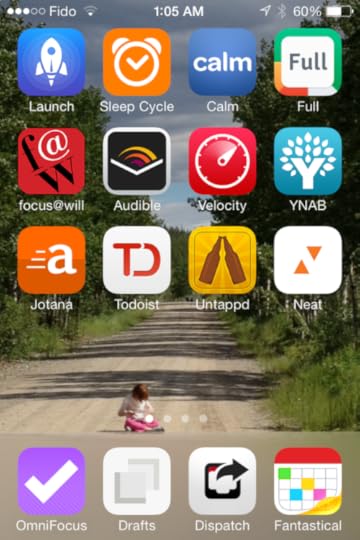
The Second Screen
The second screen is pretty much full of folders, except for the App Store, Settings, and 1Password. Now I'm not going to describe every app in these folders, but instead have highlighted all the apps that are in them and linked to each in the App Store or a prior post here at Productivityist. If you have any further questions about them, feel free to leave them in the comments.
Reviewing: TestFlight, HockeyApp, UDID, Printic, IFTTT, Rev Voice Recorder, Blends, Buy Me A Pie, Juice
Business: MailChimp, Gather, Golden Monkeys
Finance: PayPal, Ballpark, Square, Mileage Log+, Soulver
Communication: AwayFind, Phone, Messages, FaceTime, Skype, Doodle, Cobook, Evernote Hello, Mail, Find My Friends, Glassboard, Hop
Productivity: Dictation, Evernote, bloom, Due, Mindjet Maps, Timer, Reminders, 30/30, Doit.im, Asana, LessMeeting, Scanner Pro, Google Drive, My Minutes, Lift, Say&Go
Photo/Video: Camera+, Capture, Air Video, Netflix, Skitch, Vine, Superhero Backup, Videos, Camera, Photos
Reading: Reader, Zite, Flipboard, iBooks, Fish, Safari, Uncrate, FeedWrangler, Instapaper, Newsstand1
Writing: Voice Memos, Dragon Microphone, Quotebook, Squarespace, Pop, Byword, Day One, Writing Kit
Health: Nike+ Running, 7 Minute Workout, Distiller(!), Zazen Suite
The Third Screen
The third screen is half-filled, and is made up entirely of folders. I've only included the highlights of each folder here, skipping the stock apps that would fall into the categories after which is folder is named.
Utilities: Droplr, Dropbox, PrintJinni, Pastebot, iDolly, TextExpander, Keynote Remote
Passbook: Eventbrite, Cineplex, Airbnb
Social: Tweetbot, Buffer, Facebook, Path, Google+, Riposte, Whisper, Quora, Tweet Keeper, LinkedIn
Audio: Garageband, Rdio, Downcast, Coffitivity, iRig Recorder
Travel: Tripit, Perfect Weather, SkyMotion, Google Maps, Maps, Uber
Not Using: This is where I keep any apps that I can't uninstall. The usual suspects would be in here (Stocks for most; Weather, Notes, and Calendar for more folks like me). I've toyed with putting Mail in here, but have yet to pull the trigger.
The Fourth Screen
This screen acts as a "limited folder" in that I can only keep 16 apps on it without spilling over to another page. Since this screen houses all of the productivity apps I'm currently testing (as opposed to the folder on the second screen that houses the ones I have adopted), it keeps me from going beyond testing any more than 16 apps at any given time. Some of the apps in here right now include Gneo, DashPlus, Blinkist, and 24me.
So there you have it. My iPhone 4S screens, explained. If you have any questions about the apps I've got or have suggestions about others I should explore, let me know in the comments.
1 The only reason that many reading apps, if any, are on the iPhone is because I'm still using my original iPad, which doesn't support all that much any longer.






 Related StoriesWhat to Look for in Your First Task Management AppGetting Into Drafts and Launch Center ProFocus On The App Within
Related StoriesWhat to Look for in Your First Task Management AppGetting Into Drafts and Launch Center ProFocus On The App Within
February 12, 2014
Give Your Mind Fallow Time
The following is a guest post by Anabelle Fournier. Anabelle is a web copywriter and a blogger at Writing in my Head, where she mostly explores the writing life, sometimes reviews books and maybe experiments with themes a little too much. She’s still looking for the perfect work-life balance but has perfected the art of using her cat as a reason to take a break.
In our decidedly busy times, it's easy to let our minds get caught up in the constant chatter of work, family, social media and anything else that demands our time. With our hands almost fused to our smartphones, we are never far from devices that beep, alert and pop up. Now it's not only people--spouses, children, friends, bosses and colleagues--that clamour for our attention; our things demand it of us too. But human energy and attention has not increased with the amount of attention modern life requires of them. There are still only 24 hours in a day, we still need to eat and we still need to sleep.
There's an old concept in farming that has been used for thousands of years to improve land productivity before the age of artificial fertilizers: fallowing. Fallowing means leaving a piece of land untouched for at least one season (often more) to let it replenish itself. When land has been sucked out of all its nutrients, it's no use trying to grow anything on it.
It's easy to see how our bodies work in this analogy: we lie motionless for about a third of every day to replenish our energy. But is there a way we can think of our minds as finite resources requiring shutdown and replenishing as well, beyond that of sleeping?
This analogy came to me after reading Margaret Atwood's MaddAdam. After a difficult fall season with lots of work, stress and exhaustion, I ended up spending the Christmas holidays in pretty much a single way: on the couch with my cat and Netflix. It seemed like lazy indulgence at the time. I barely bothered to cook food and only left the couch for the bed. I wrote nothing, thought of nothing but how to satisfy thirst and hunger and did not much physically either. You could have called me a lazy slob, and I probably would have agreed with you.
But it's only when January came that I realized that this wasn't at all a bout of laziness. I am a generally ambitious person who likes to do things when she has free time. I may not always make the best of that time, but I try my best. But this time, it was different. My mind needed an extended shutdown, the kind of shutdown that can only be achieved with mindless television and maybe a little help from wine.
By the time January rolled, my mind felt fresh and ready to take on new challenges. I was filled with ideas and projects. I let my mind go in fallow; I let it rest undisturbed for new seeds to grow stronger in the new year.
But you don't need to wait until your mind is completely devoid of nutrients to enjoy the benefits of fallowing. Meditation is one way to let your mind rest undisturbed a little while every day. Exercise can also shut our minds down long enough to get great benefits.
Mike often reminds us of the importance of taking breaks, of saying no, of making time outside of work. Land cannot be constantly growing things--neither can our minds.
Next time your drive to work goes down, your goals don't seem as shiny and interesting as they seemed a month ago, your mind just yells "stay in bed!" when your alarm rings... maybe it's time to plan some fallow time.
Have you ever experienced the need to fallow? How did you know you were ready to go back to work? I'd love to hear your stories.






 Related StoriesThe Art and Science of Managing ExpectationsRecognizing Opportunity in the Pursuit of Your CallingFocus, Forward, and Family: My Three Words for 2014
Related StoriesThe Art and Science of Managing ExpectationsRecognizing Opportunity in the Pursuit of Your CallingFocus, Forward, and Family: My Three Words for 2014
February 10, 2014
How To Use Evernote To Store And Organize Your Ideas
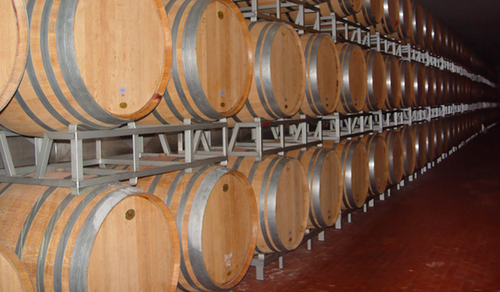
I write for a lot of different sites and I write for a lot of different projects (books, etc.). Keeping track of what should go where can be a real challenge in a writing app itself (I use Byword for articles and Scrivener for larger writing projects) because you can really only store things in a singular fashion unless you have a series of nested folders for each site or project. Tagging written work only goes so far, and it isn't something you can do in many operating systems, or even in both Mac OSX and in iOS because while you can use tags on the Mac but not in iOS. My text editors are where the writing takes place, and it is the best place for that activity. It's not great for ideation or larger writing project organization.
That's where Evernote fits in.
I've touted Evernote as a place where I store a lot of information that I want to be able to access anytime and anywhere. Evernote is a key cog in my "productivity path" and it's where I organize all of my writing projects.
(Note: If you want to get the most out of Evernote on the whole, I highly recommend you pick up Brett Kelly's book Evernote Essentials 4. It's on sale for only $14.99 and it will make take your Evernote proficiency to a whole new level.)
My task manager tells me when to write and for what site or project, and I have that set up because I'm writing for so many places these days. But I don't use my task manager to store my specific ideas. So when I'm prompted to write for a specific site or project, the task is intentionally vague. I'll use something like "Write piece for 99u" so that I am triggered to go to the place where the stored ideas for 99u exist, which is in Evernote.
I get my post ideas into Evernote in a number of ways:
From iOS, I use Drafts. If I'm away from my Mac, I'll key in an idea for a post and then send it to my root Evernote notebook, which is called "Inbox" and then process the ideas in there later. When I process the ideas, I'll move them to other notebooks that are named after the various sites and projects I write for. Larger projects (like this Productivityist, for example) have notebook stacks that contain other related notebooks (Blog Posts, Products, etc.) within them.
The Evernote Web Clipper. If I find something on the web that sparks an idea, I'll clip it with the Evernote Web Clipper. Then I'll assign the idea to the appropriate folder directly, skipping the Inbox notebook altogether.
Email. Whether it's through the action I have set up in Dispatch for my iPhone or through the email address provided with my Evernote account, if an idea has comes my way via email (like when a new app is released or some PR comes my way that sparks a post idea) I'll send it to Evernote. Then I'll process the Inbox notebook later, meaning that anything from email and Drafts gets assigned to the right notebooks then.
Evernote is a great idea incubator because you can set it and then forget it. Once you start building the sort of workflow that I have, then all you need to do is create a repeating task in your task management app of choice that you name "Evernote Weekly Review" and make sure you go through the notebooks in your Evernote account that you want to keep on top of regularly. A trick to ensure you only check those you need to rather than every notebook is to place an asterisk at the end of the notebook (or notebook stack) name. That asterisk will act as a trigger to tell you what notebooks need weekly reviewing and which ones don't.
(Oh, and since Evernote displays notebooks alphabetically, I also place an asterisk at the beginning of my Inbox notebook so that it remains at the top of my Evernote notebooks.)
Just like your task management system setup, you need to set up Evernote in a way that is simple for you to deal with and can scale over time. Being deliberate with your naming conventions is critical, and don't be afraid to have notebooks that are created for aspects of your writing projects. I've got a notebook stack called "Guest Posting" that contains all of the notebooks I use for the sites I have written for (and even ones that I'm looking to write for). "Productivityist" is a notebook stack as well, and there are many notebooks that fall under its umbrella. My task management app has many projects and few contexts. The same goes for Evernote – many notebooks, few tags. 1
Idea management isn't easy because we often generate more ideas than we can handle at any given time. That's why having a place where those ideas can go is crucial. You never know when you'll want to call upon an idea you've had, whether you're a writer, an entrepreneur, an artist, or even simply trying to make your work and life better. Evernote offers that storage facility for your ideas that you need. It just needs to be organized in a way that works for you so that you know where to find your ideas when you need them. Take the time to set it up right and as you and your ideas scale, Evernote will scale right along with you.
Photo credit: takje via SXC.HU
1 And I try to make the contexts and tags as universal as possible.






 Related StoriesHow We Pulled Off a Huge Event Through OutsourcingThe Strikethrough System: A Simple Paper-Based Productivity ToolGoing Beyond Inbox Zero
Related StoriesHow We Pulled Off a Huge Event Through OutsourcingThe Strikethrough System: A Simple Paper-Based Productivity ToolGoing Beyond Inbox Zero
February 7, 2014
Please Take The 2014 Productivityist Reader Survey
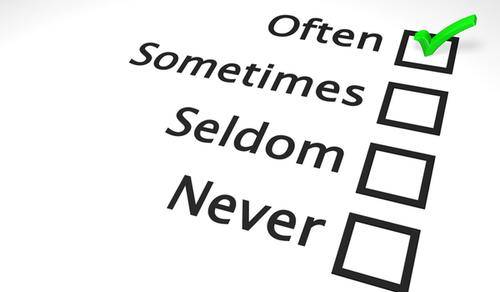
One of the biggest takeaways I received from New Media Expo was the suggestion that you should survey your readers. As I sat in Michael Hyatt's session, I realized that it was time for me to develop one for Productivityist, and he even told the audience that we could "steal his questions" if we liked.1
With that in mind, I present to you The 2014 Productivityist Reader Survey.
While I did take some of his questions and re-purposed them for this survey, the more relevant idea that I took from him was that in order to make Productivityist better was that I needed to find out what you, the reader, want. (Incidentally, I discuss the idea of making better things — and making things better — in my latest newsletter. If you don't to miss on what I offer in those bi-weekly missives, you can subscribe to the newsletter here.)
Your input is important to me, so I'm hoping you'll take a few minutes to fill out the survey. By doing so you will be helping me make the content Productivityist offers even more interesting, relevant, and valuable to you.
There are no required questions. It is totally anonymous. I won't be asking for your email in the survey or try to sell you anything. All I'd like is some of your time and your help to make Productivityist even better. Once I've compiled all the data, I'll share the results with you here on the blog.
When you're ready to get started, click on the button below...and thank you.
Take The 2014 Productivityist Reader Survey
Photo credit: parylo00 via SXC.HU
1 I’d also like to thank Brooks Duncan over at DocumentSnap for helping me out with this process.






 Related StoriesThe NOW Year and The New Year9 Ways to Become a More Productive WriterThe Strikethrough System: A Simple Paper-Based Productivity Tool
Related StoriesThe NOW Year and The New Year9 Ways to Become a More Productive WriterThe Strikethrough System: A Simple Paper-Based Productivity Tool
February 5, 2014
The Power Of Sleep
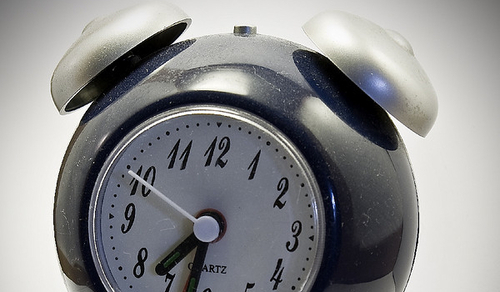
I've been re-reading Tony Schwartz's book The Way We're Working Isn't Working, and this guest post by Robyn Adams definitely speaks to a major theme in the book: the power of sleep. Robyn has learned to simplify life and increase productivity so she can enjoy life to the fullest. Her blog Living the Simple Life Now chronicles her journey as she has sought to simplify her family’s life and pursue happiness. You can download a free copy of “101 Ways to Simplify Your Life Overnight” on her blog.
We are all given 24 hours each day, but exactly how much of those hours should we spending sleeping so that we can achieve our maximum productivity level?
The answer to how much sleep we really needs lies in the power of sleep. In our modern era, this seems to be something that has slipped in importance in the average Westerner’s agenda. Many think they can get more time and be more productive simply by skipping sleep.
According to WebMD, “Decreased alertness and excessive daytime sleepiness impairs your memory and your cognitive ability — your ability to think and process information.” In fact, by getting just a half an hour less of sleep a night than you need can reduce your mental alertness and productivity by 32%.
The 8 Hour Myth
We’ve been told for the last 25 years that we need the ideal 8 hours of sleep to achieve the perfect amount of sleep. But the amount of sleep we need depends on the individual needs of your body. It may be more or less than the stereotypical 8 hours. In order to get proper sleep, you need to be healthy and taking care of your body so it can do what it needs to do while you sleep. This includes things like:
Keep a regular sleep/wake schedule 7 days a week
Get regular exercise
Eat a well-balanced diet
Avoid alcohol and heavy meals before sleep
Don’t consume caffeine 4-6 hours before bedtime
So, How Much Sleep Do I Need?
If you are living a healthy lifestyle, your typical sleep needs will be around 8 hours, possibly less. The best way to tell exactly how much sleep you do need is to start with 7 or 8 hours. Do you feel rested and productive all day? If not, you may need to add an extra 30 minutes or an hour of sleep and see how you feel. If you feel fine, you might trim 30 minutes off the next day and see what your productivity level is.
An interesting study by Daniel Kripke, co-director of research at the Scripps Clinic Sleep Center in La Jolla, California, found that people who sleep between 6.5 hours and 7.5 hours a night may actually live the longest. And people who sleep 8 hours or more, or less than 6.5 hours don't live quite as long.
Sleep needs can also change from day to day. If you are sick, you will need more sleep so your body can fight off the virus or infection. The same is true if you had an extremely physical day that tired your body out more than usual. Experts say there is no “magic number” for how much sleep you need. Only you can tell, and only by monitoring your mental alertness and productivity can you determine how much sleep your body needs.
Productive Sleep Is A Process
For most people, sleep is not something that happens automatically. You can’t just lie down and fall asleep in 5 minutes. Your path to the ideal sleep and productivity balance will be much easier.
For most people, there is a process of winding down and preparing for sleep. This step is skipped by many and it leads to insomnia and other sleep problems, which only decreases productivity. Recognizing your individual sleep process is an important first step in increased productivity. As the time you have determined is the best time for you to go to bed approaches, you need to start “winding down” so your brain knows that it must start to slow down to ready for sleep.
Getting good sleep is a habit. It’s easy to let sleep be the first thing to slip in its importance in your life when things get stressful. It’s tempting to stay up an extra house so you can be more productive. But studies show that finding the right amount of sleep for you will lead to your optimal level of productivity instead.
Want to increase your productivity? Start tonight and try to determine the right amount of sleep your body needs. Once you find the right amount, your productivity levels are likely to soar!
Photo credit: Paul 李加乂 Li via flickr (CC BY-NC 2.0 license)






 Related StoriesThe Next Move3 Things You Can Do To Start A Year Of Action27 Days In
Related StoriesThe Next Move3 Things You Can Do To Start A Year Of Action27 Days In



